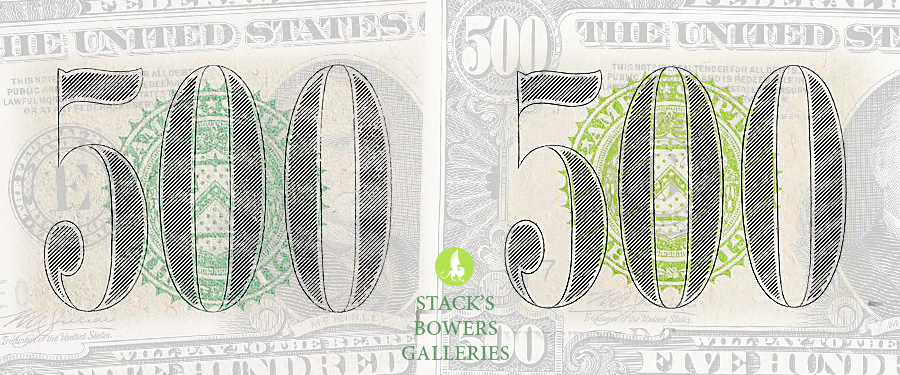
Over the course of several years in the 1930s, the ink used to print Treasury seals and serial numbers on Series 1928 and 1934 Federal Reserve Notes shifted from what paper money expert Peter Huntoon describes in a 2017 Numismatic News article as “vivid yellow-green to vivid blue-green to dull blue-green.” These changes seem to have taken place the late 1930s.
According to a 2010 article on Paper Money Guaranty’s website, “This color change was gradual, so collectors have been able to observe the variations in color in both series.” A number of collectible color varieties resulted, with subtle gradations between them. Assiduous research using censuses of known notes and Treasury documents has established the time frames of the transitions and a taxonomy of color divisions. Generally the colors are separated into two categories: Light and Dark Green.
In the 2017 Numismatic News piece, Huntoon describes the final color, as the dull blue-green seals darkened: “Gradually they [the Treasury Seals] took on a steelier cast and by the beginning of World War II became standardized to the color that closed out the remaining dozen years of the series.” The Series 1934 was retired in 1950.
Stack’s Bowers Galleries is offering a number of $500 and $1,000 Federal Reserve Notes in our February U.S. Currency $500’s and $1,000’s CCO Auction which exhibit both Treasury seal/serial number colors. We have auctions dedicated to these high denominations several times per year and often some notes feature the different hues of Treasury seals briefly discussed in this blog.
To view lots and bid online, please visit: https://auctions.stacksbowers.com/auctions/3-10XPJS/february-2023-us-currency-collectors-choice-online-auction-500s-1000s-lots-70001-70054





